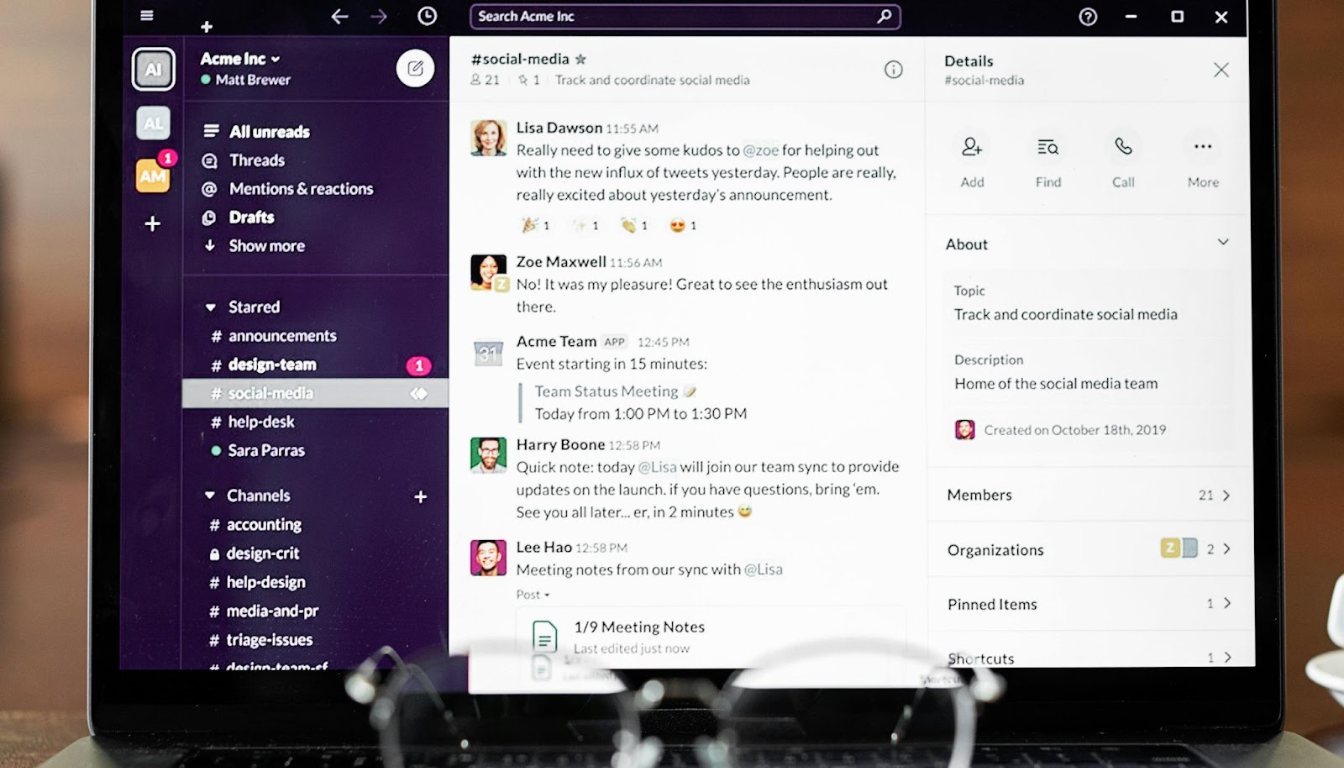Top Tools and Strategies for Managing Virtual Teams Effectively

Virtual teams consist of members working from different locations, relying on digital tools for collaboration. Effective management of these teams is essential as remote work grows. This article covers key tools and strategies for managing virtual teams, including collaboration platforms, communication tools, and methods to build team cohesion.
Key Takeaways
- Virtual office platforms enhance remote team collaboration through secure communication, project management tools, and seamless integration of various technologies.
- Building team cohesion in virtual environments can be achieved through regular check-ins, virtual team-building activities, and celebrating milestones to maintain engagement and morale.
- Effective leadership for virtual teams involves setting clear expectations, providing continuous support, and promoting work-life balance to enhance productivity and employee well-being.
Setting Up a Virtual Office
Setting up a virtual office is a streamlined process that allows businesses to establish a professional presence without the need for a physical office. The first step is to research and select a virtual office provider that aligns with your business needs. With a variety of virtual office providers available, it’s important to compare their virtual office plans, services, and pricing to find the best fit for your company.
Once you’ve chosen a provider, the next consideration is the virtual office location. Whether you’re seeking a prestigious business address in a major city or a more cost-effective office address in a smaller market, your virtual office location will serve as your official business address for correspondence, marketing materials, and client communications. This address can also be used for mail forwarding, ensuring you receive mail promptly no matter where your remote team is based.
Selecting the right virtual office plan is crucial. Virtual office plans range from basic packages that include a virtual office address and mail handling, to more comprehensive options featuring access to meeting rooms, virtual meeting spaces, and video conferencing facilities. Some plans also offer live call answering, virtual receptionists, and human resource management services, all designed to enhance your professional business image and streamline daily operations.
As you set up your virtual office, consider the specific needs of your remote team. Providing access to virtual meeting rooms, reliable video conferencing tools, and project management software can help your distributed team collaborate effectively and stay connected. These virtual office services not only support efficient project management but also foster a sense of unity and professionalism across your organization.
Ultimately, setting up a virtual office is an effective way to project a professional image, secure a reputable business address, and provide essential support for your remote team. By carefully selecting a virtual office provider and a plan that matches your business needs, you can create a flexible, scalable foundation for business growth and seamless remote collaboration.
Key Features of Virtual Office Platforms for Virtual Teams

Virtual office platforms replicate the features and interactions of traditional offices within a remote setting. These platforms provide essential features such as seamless collaboration tools, project management software, online workspace, and secure communication channels, all aimed at enhancing connection, productivity, and security for remote teams. Additionally, a virtual office platform can further streamline these processes with virtual office software that integrates into existing workflows.
Virtual office services help businesses maintain a professional image while operating remotely by offering:
- Professional virtual office address
- Mail handling
- Call answering
- Meeting room booking
- Access to meeting space and private office options for clients who need dedicated or flexible workspace
- Virtual office plan that meets business needs provided by other virtual office providers, including a fixed address and a business name, as well as virtual office space options, including mail forwarding
- Access to coworking space and coworking spaces as premium options, offering amenities like meeting space, receptionist services, and a collaborative environment
Some providers also offer access to private offices and coworking spaces in prestigious locations, providing a more upscale or collaborative setting for businesses seeking a professional presence.
This adaptability makes virtual offices ideal for managing virtual teams. Businesses can open multiple virtual offices across different locations to support expansion and scalability. Compared to traditional office space and physical office space, virtual office solutions offer significant cost savings and flexibility, allowing companies to establish a presence without the commitments of long-term leases.
Seamless Collaboration Tools
Effective collaboration is the bedrock of any successful team, and virtual office platforms excel in providing integrated tools that facilitate real-time document sharing and communication. These tools enable team members to collaborate as if they were in the same room, regardless of their geographical location.
Overlapping work hours and adapted communication schedules can further enhance collaboration among team members spread across different time zones. Maintaining open communication and keeping everyone on the same page, virtual offices help remote teams communicate seamlessly and work efficiently.
Project Management Software
Project management software is a critical component of virtual office platforms, helping teams organize tasks and monitor project progress seamlessly. These tools allow team members to stay aligned with project goals and deadlines, ensuring that everyone is on track.
Features like task assignments, progress tracking, and deadline reminders in project management software enhance productivity and accountability within distributed teams. This organization is crucial for managing virtual teams and ensuring projects are completed on time and within budget.
Secure Communication Channels
In a virtual office environment, secure communication channels are paramount to protect sensitive information and maintain privacy. Establishing clear communication protocols can significantly enhance understanding and collaboration among remote team members. These secure channels ensure that business communications remain confidential, reducing the risk of data breaches and fostering a culture of trust within the team.
Utilizing video conferencing, encrypted messaging apps, and secure file-sharing services, virtual offices provide the infrastructure necessary for secure and effective team communication.
Enhancing Team Cohesion and Culture in a Virtual Environment

Building a strong team culture and enhancing cohesion in a virtual environment are crucial for maintaining engagement and productivity among remote teams. Fostering a sense of belonging can significantly improve employee satisfaction and reduce feelings of isolation.
This can be achieved through intentional connections and shared experiences, such as virtual team-building activities, regular check-ins, and celebrating milestones remotely. These efforts foster a supportive and collaborative virtual workspace where team members feel valued and connected.
Virtual Team Building Activities
Regular informal meetings and virtual team-building activities enhance morale and cohesion among a remote team member. Activities like online trivia games, virtual escape rooms, and other interactive experiences build relationship building and foster a sense of camaraderie.
These activities boost team spirit and combat feelings of isolation and disengagement, making them crucial for managing virtual teams effectively.
Regular Check-Ins and Meetings
Frequent team meetings maintain transparency and ensure the whole team is aligned on project goals. Consistent virtual meetings foster a sense of camaraderie and provide opportunities for personal interaction, helping to build trust and open communication within the team.
Regular individual check-ins enhance personal engagement and support, allowing team leaders to address performance and provide personalized feedback. These practices ensure all team members feel heard and valued, contributing to a cohesive and motivated virtual team.
Celebrating Milestones Remotely
Celebrating milestones remotely recognizes team achievements and boosts morale. Virtual events and online ceremonies acknowledge individual and group successes, making team members feel valued for their contributions.
Using video conferencing tools for these celebrations enhances the sense of community and recognition among remote teams, reinforcing a positive and supportive company culture. These efforts contribute to a more engaged and motivated virtual team.
Best Practices for Leading Virtual Teams

The shift to virtual teams has been accelerated by the need for fewer people in physical office spaces, especially as organizations responded to social distancing measures and underutilization of offices during the pandemic.
Effective leadership in virtual teams requires clear communication, set expectations, and continuous support. Establishing specific work hours, documented processes, and clear productivity goals are crucial for maintaining accountability within virtual teams.
Additionally, promoting regular check-ins, team-building activities, and mental health initiatives helps create a supportive and productive virtual work environment.
Setting Clear Expectations
Setting clear expectations and having documented processes can help remote workers maintain focus and productivity. This includes specific productivity goals that keep remote teams aligned with broader organizational objectives. Ensuring accountability and transparency, leaders create a structured environment where team members know what is expected, leading to higher efficiency and effectiveness.
Providing Continuous Support and Feedback
Regular check-ins serve as a platform for providing continuous support and constructive feedback, which are critical for team development. Check-ins allow leaders to set clear goals, address issues promptly, and offer personalized feedback to enhance individual performance.
The combination of ongoing support and feedback boosts overall team productivity and fosters a culture of open communication and growth.
Encouraging Work-Life Balance
Promoting work-life balance is essential for preventing burnout and maintaining overall well-being among remote employees. Offering flexible work hours and embracing asynchronous communication allows team members to manage their personal commitments alongside work responsibilities.
Encouraging regular breaks and a healthy work-life balance enhances productivity and job satisfaction, contributing to a more sustainable and positive remote work environment.
Leveraging Technology for Virtual Teams

Technology plays a pivotal role in managing virtual teams. Tools like:
- video conferencing
- project management software
- file-sharing services
- secure communication channels enhance collaboration and productivity within virtual teams.
Virtual office platforms integrate these tools, creating a cohesive and efficient virtual work environment.
The scalability of these platforms, allowing seamless addition or removal of users and resources, makes them ideal for dynamic virtual teams. Advanced security measures and compliance with industry standards ensure that sensitive information is protected.
Virtual Desktop Infrastructure (VDI)
Virtual Desktop Infrastructure (VDI) solutions provide a secure and flexible virtual workspace, allowing employees to access their work environment and applications from any location. VDI enhances productivity by enabling employees to work from any device, ensuring they have the tools needed to perform tasks effectively.
Virtual office platforms often include VDI capabilities, streamlining work processes and improving overall efficiency.
Integration with Existing Tools
Integrating virtual office platforms with existing business applications enhances team efficiency and workflow. Customizing virtual workspace needs through integrations better aligns with team workflows, ensuring team members can use familiar tools in customizable spaces.
This integration reduces disruption and enhances productivity, making it easier for teams to adapt to virtual work environments.
Advanced People Analytics
Advanced people analytics tools offer valuable insights into team performance and engagement. These tools track time management, productivity, and overall engagement within virtual teams, helping managers identify areas for improvement.
Leveraging these insights, leaders can make data-driven decisions to enhance team dynamics and ensure all team members are performing at their best.
Overcoming Challenges in Managing Virtual Teams
Managing virtual teams comes with challenges, including communication barriers, time zone differences, and maintaining productivity. Effective leadership requires understanding these challenges and implementing strategies to address them.
Advanced analytics tools provide insights into team dynamics and individual performance, helping leaders navigate these challenges more effectively.
Communication Issues
Digital communication often lacks nonverbal cues, leading to misunderstandings and misinterpretations. Using visual aids during remote meetings can improve engagement and ensure clarity in communication, but nothing replaces the value of face to face interaction.
Clear communication protocols and encouraging open communication mitigate these issues, fostering a more cohesive and effective virtual team.
Time Zone Differences
Managing time zone differences is crucial for effective collaboration in virtual teams. Overlapping work hours facilitate better collaboration among team members in different time zones.
Asynchronous communication tools allow team members to collaborate effectively, even when they are not available at the same time. These strategies ensure all team members can contribute to the team’s success, regardless of their location.
Maintaining Productivity
Clear expectations for work hours, communication protocols, and performance standards are essential for maintaining productivity in remote teams. Advanced people analytics tools help managers track time management, productivity, and engagement, offering valuable insights to enhance performance.
Promoting work-life balance and regular check-ins prevent burnout and maintain overall well-being, ultimately enhancing productivity.
The Future of Virtual Teams

The landscape of virtual teams is evolving rapidly, with projections indicating a continued increase in remote work beyond recent global events. Many organizations are expected to maintain a remote or hybrid team arrangement, combining the flexibility of remote work with the benefits of traditional office setups and the need for a physical location.
Future trends in virtual team management include the increasing adoption of hybrid work models, advancements in VR and AR technologies, and the growing emphasis on employee well-being.
Increasing Adoption of Hybrid Work Models
Hybrid work models, combining remote and in-office work, are becoming increasingly popular as organizations recognize their positive impact on employee satisfaction and productivity. These models offer employees the flexibility to choose their work environment, leading to higher job satisfaction and reduced commute times.
Allowing employees to balance personal and professional commitments, hybrid work models significantly enhance work-life balance. This trend is expected to continue as more companies adopt flexible working arrangements to attract and retain top talent.
Advances in Virtual Reality (VR) and Augmented Reality (AR)
Emerging VR and AR technologies are poised to revolutionize virtual workspaces by creating immersive and interactive experiences that enhance team collaboration. These technologies allow team members to interact in virtual environments that mimic physical office spaces, complete with spatial audio and realistic visuals.
Providing richer collaboration and engagement opportunities, VR and AR can bridge the gap between remote and in-office work, making virtual teams more cohesive and productive.
Emphasis on Employee Well-Being
There is a growing emphasis on mental health and well-being in virtual teams, highlighting the role technology plays in supporting employee wellness initiatives. Companies increasingly prioritize employee mental health by leveraging technology to offer support and resources tailored for remote work challenges.
Tools and platforms that monitor and enhance employee mental health and well-being are becoming integral to human resource management in virtual team management. This commitment reflects a broader organizational goal to foster a healthier and more supportive work environment for remote employees.
Summary
Managing virtual teams effectively requires a combination of the right tools, strategies, and a focus on team cohesion and well-being. Virtual office platforms provide essential features like seamless collaboration tools, project management software, and secure communication channels that replicate traditional office functionality in a remote environment. Enhancing team cohesion through virtual team-building activities, regular check-ins, and celebrating milestones is crucial for maintaining engagement and productivity. Best practices for leading virtual teams include setting clear expectations, providing continuous support and feedback, and encouraging work-life balance. Leveraging technology, such as VDI, integrations with existing tools, and advanced people analytics, further enhances the efficiency and effectiveness of virtual teams. Companies have also begun partnering with specialized providers to organize meaningful team retreats and offsites—an area where firms like Offsite have emerged to help streamline planning and execution, reflecting a broader focus on intentional connection. Overcoming challenges like communication issues and time zone differences is essential for ensuring smooth operations. Looking ahead, the future of virtual teams will see increasing adoption of hybrid work models, advancements in VR and AR technologies, and a growing emphasis on employee well-being. Embracing these trends and strategies will help organizations create cohesive, productive, and engaged virtual teams.
FAQs
- What are the key features of virtual office platforms for virtual teams?
Virtual office platforms are essential for remote teams as they provide seamless collaboration tools, project management software, and secure communication channels, significantly enhancing productivity and security. These features ensure teams can connect effectively and work efficiently from anywhere.
- How can virtual team-building activities enhance team cohesion?
Engaging in virtual team-building activities like online trivia games and virtual escape rooms significantly boosts morale and fosters a sense of camaraderie, thereby enhancing team cohesion among remote members. These interactions create meaningful connections that contribute to a more united team environment.
- Why is setting clear expectations important for virtual teams?
Setting clear expectations is essential for virtual teams as it enhances focus, productivity, and accountability, ensuring everyone aligns with organizational goals. This clarity fosters an environment where remote workers can thrive and collaborate effectively.
- How does VDI benefit virtual teams?
VDI significantly benefits virtual teams by offering a secure and flexible workspace, enabling employees to access their work and applications from anywhere, which ultimately enhances productivity and flexibility.
You may also like
Unique spaces for your next offsite
Find distinctive venues for your upcoming corporate retreat.
Stay Updated with Our Insights
Get exclusive content and valuable updates directly to you.







